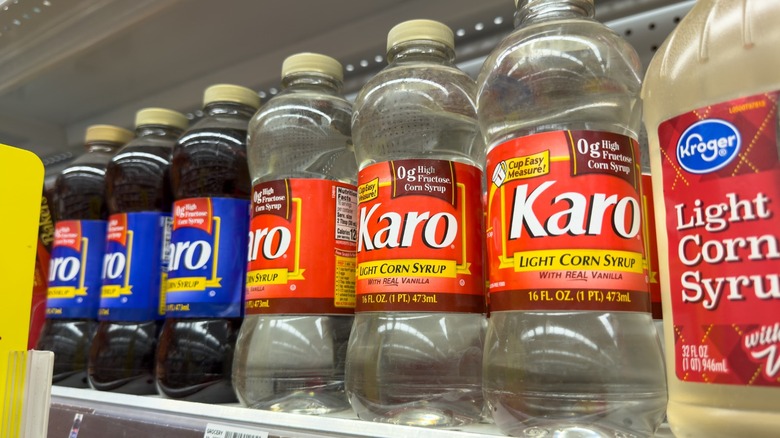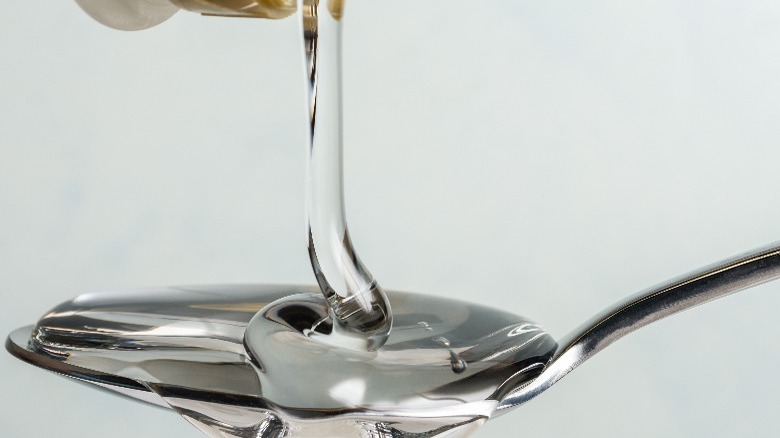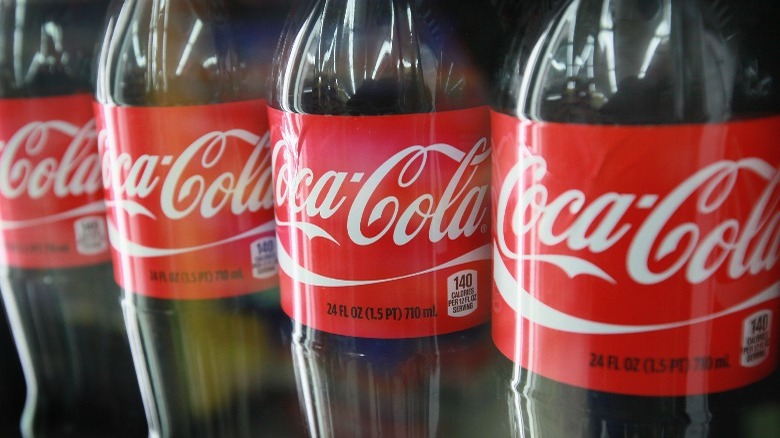The Difference Between Standard And High-Fructose Corn Syrup
The science and economics of corn syrup can be tricky, and figuring out the differences between these types of these sweeteners can feel like getting lost in a maze of stalks. The important point to understand is that the bottles of clear and brown gooey liquid in the baking aisle of your local grocery store are different than the high-fructose variety you see listed on the back of candy, soda, and other processed food labels.
In many ways, corn syrup is the result of an attempt to make more of that sweet, delicious luxury we call sugar. Sugars are found all over the world in a variety of different sources like fruits, honey, and cereal grains. However, refined sugarcane juice provides the pure, concentrated white table sugar that's available for mass consumption. Deriving sugar from readily available corn widens the market for commercial sweeteners. Import tariffs on sugarcane products further hastened the growth of corn syrup, especially in its high-fructose form.
What is standard corn syrup?
Basic corn syrup begins with corn starch, derived from the tissue of corn kernels. Once mixed with water, producers introduce amylase enzymes, which convert the starch into glucose. Amylase is naturally found in our saliva, and it helps the starchy foods we eat break down into sugars. This process, called hydrolysis, makes the resulting syrup sweeter and thicker as the reaction occurs. In the end, producers add either vanilla flavoring and salt to make clear corn syrup or refined molasses-type syrup, or they add caramel coloring to make dark corn syrup.
Unlike table sugar, which is a sucrose, corn syrup is glucose. Regardless, the human body ultimately breaks down sucrose into glucose. In other words, refining corn syrup skips a step, and it's not exactly a substitute for powdered sugar in baking. Instead, it's more like a supplement, preventing the formation of sugar crystals in pies, ice creams, and other homemade desserts. Corn syrup thus provides a smoother texture while keeping the sweetness intact.
What is high-fructose corn syrup?
In 1957, agricultural scientists Richard O. Marshall and Earl R. Kooi discovered an enzyme called isomerase that could convert the glucose in corn syrup to the much sweeter fructose. The cheaper cost of production made high-fructose corn syrup a popular industrial sweetener compared to refined sugar. By 1984, it became all the rage among food manufacturing companies, especially big soda. In the past decade or so, however, health-conscious consumers have migrated away from the sugary additive, opting for snacks and drinks with a "natural" sugar label.
At a basic level, high-fructose corn syrup is about as unhealthy as refined sugar, which is broken down into both glucose and fructose in your body. The danger is that whereas you can moderate your table sugar intake at home, it's a lot harder to adjust servings of high-fructose corn syrup when it's already found in commercially sold food products in supermarkets. However, you'll never be able to find pure, bottled high-fructose corn syrup, hiding amongst the rows of regular corn syrup.



